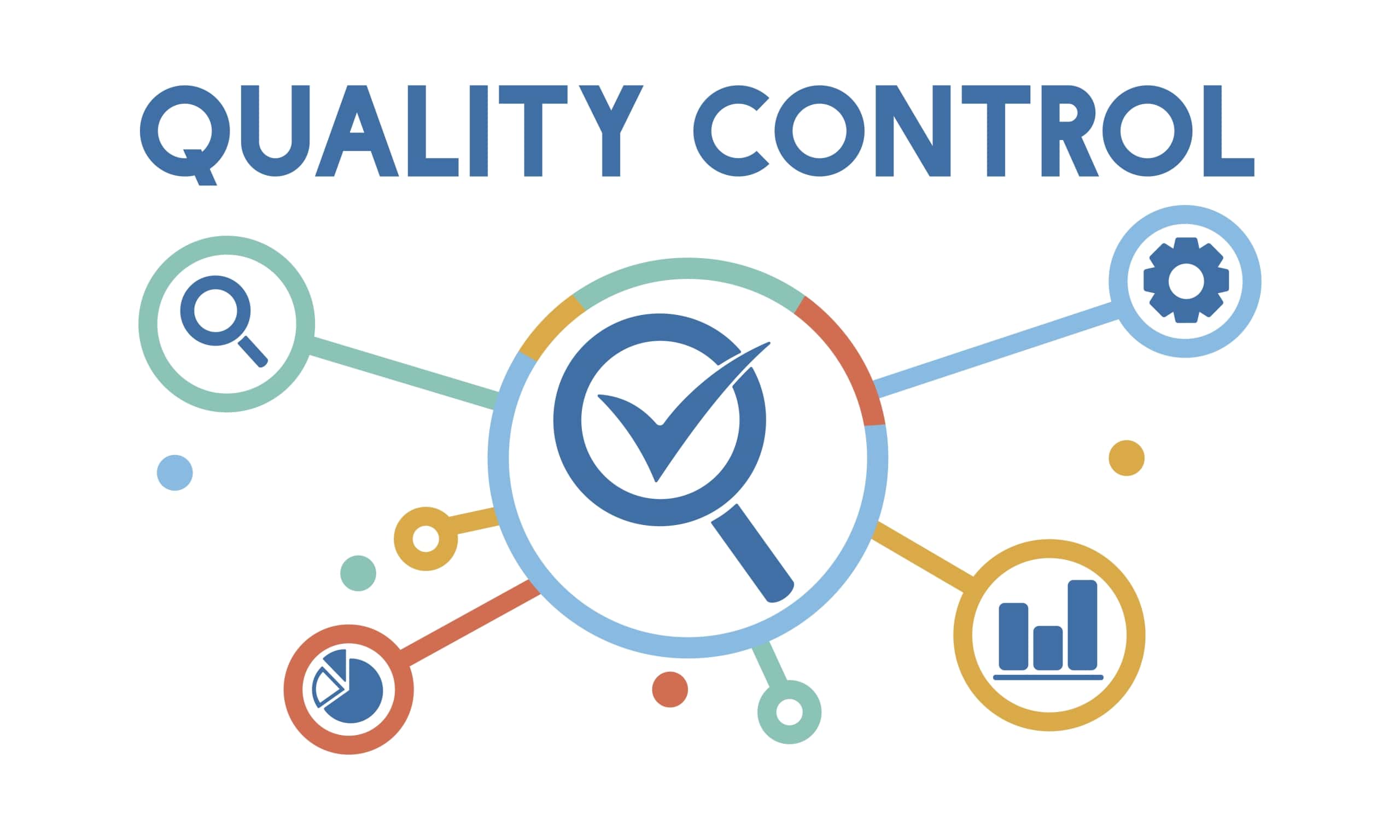The Role of Automation in Wet Wipes Production
1. Enhanced Efficiency and Speed
Automation revolutionizes the wet wipes manufacturing process by greatly enhancing efficiency and velocity. Within a manual manufacturing environment, activities such as the cutting, folding, and packing of wet wipes require a significant amount of effort and time, often resulting in obstacles and delays. Automated wet wipes machines, however, are specifically designed to execute these repetitive activities rapidly and with exceptional accuracy. Automated cutters can slice through materials, guaranteeing consistency in each piece precisely. Simultaneously, robotic arms manage folding and packing tasks at rates surpassing human capabilities. This heightened rate of progress not only expedites the manufacturing process but also enables producers to fulfill more demand without sacrificing quality or consistency.
Furthermore, automated systems function incessantly without requiring breaks or shifts, therefore optimizing working hours and minimizing periods of inactivity. The continuous operation of this feature is especially beneficial in an industry where the frequent difficulties of achieving strict deadlines and delivering substantial orders are prevalent. Automation assists manufacturers in optimizing their operations by ensuring a consistent and efficient wet wipes manufacturing process, hence enhancing overall productivity and eliminating any inefficiencies. Enhanced production efficiency, resulting in higher output and reduced lead time, directly contributes to expanded capability and accelerated time-to-market, providing wet wipes manufacturers with a competitive advantage in the rapidly evolving wet wipes sector.
Furthermore, automation improves productivity by reducing mistakes and decreasing waste. Human operators, while exerting their utmost diligence, are susceptible to tiredness and errors, which may result in flaws and the squandering of materials. Automated machines, coupled with sophisticated sensors and control systems, guarantee the accurate completion of each job, greatly minimizing the probability of mistakes. Such accuracy not only improves the quality of the end product but also maximizes the use of raw resources, resulting in cost savings and promoting environmental sustainability. By incorporating automation into the manufacturing process of wet wipes, wet wipes manufacturers may attain unparalleled levels of efficiency and velocity, hence facilitating increased profitability and expansion.
2. Consistent Product Quality
Automation is essential for keeping constant product quality in the manufacture of wet wipes. This is important for upholding a brand reputation and guaranteeing customer pleasure. Manual manufacturing procedures are susceptible to errors in the result due to variances in human performance. Variations in the approach used by individual workers while doing operations such as cutting, folding, and packing might lead to wet wipes that differ in terms of their size, thickness, and moisture level. Automated methods are specifically engineered to execute these operations with meticulous accuracy on every occasion, guaranteeing that each product adheres to the same elevated standards. Uniformity is crucial for establishing consumer confidence since clients anticipate consistent quality in every transaction.
In addition, automated equipment is outfitted with sophisticated sensors and control mechanisms that consistently oversee the manufacturing process. These systems identify any deviations from the established criteria and promptly make modifications in real-time to rectify them, so guaranteeing that the product’s quality stays consistently high throughout the manufacturing process. For instance, when a sensor detects that a wipe is not being cut to the precise proportions, it promptly sends a signal to the machine to make the necessary adjustments to the cutting mechanism. By adopting a proactive approach to quality control, the occurrence of faults is minimized, hence reducing the likelihood of defective items being released into the market.
Automation not only ensures constant quality but also improves the overall quality of wet wipes by allowing more accurate and advanced manufacturing procedures. Automated mixing systems can guarantee the precise combination of components for every batch, leading to wipes that have ideal wetness and texture. Furthermore, automated packaging machines can securely package wipes with a uniform level of tightness and integrity, therefore maintaining their freshness and efficacy. These enhancements in product quality may assist wet wipes manufacturers in distinguishing their products in a saturated market, appealing to discriminating clients who favor premium wet wipes.
Furthermore, the data gathered by automated systems throughout the wet wipes manufacturing process may be examined to detect patterns and pinpoint opportunities for improvement. By using this data, wet wipes manufacturers may optimize their operations to further improve product quality and uniformity. Automation facilitates continuous improvement by offering the necessary tools and insights to enhance all aspects of production. Incorporating automation into their processes allows wet wipes manufacturers to regularly produce wet wipes that not only meet but also beyond client expectations, thus enhancing their brand’s reputation for excellence and dependability.
3. Reduced Labor Costs
An important benefit of automating the wet wipes manufacturing process is the decrease in labor expenses. In a conventional, labor-intensive production arrangement, a significant proportion of the budget is assigned to remuneration, perks, and education for a sizable staff. This may be especially onerous in sectors with narrow profit margins, such as the production of wet wipes. Automation mitigates this problem by reducing the need for human labor, enabling wet wipes manufacturers to deploy their financial resources more effectively. Automated systems are capable of carrying out monotonous and physically demanding operations, such as cutting, folding, and packing, at a much lower cost, hence diminishing the need for a substantial human labor force.
The reduction in labor expenses encompasses more than simply salaries. By reducing the number of personnel needed on the factory floor, there is a corresponding decrease in expenditures associated with employee benefits, insurance, and compliance with labor standards. Moreover, the expenses linked to recruiting, instructing, and maintaining staff members might be significant. High rates of employee attrition, which are prevalent in businesses that rely heavily on manual labor, exacerbate these expenses. Through the use of automation, organizations may reduce these expenses, resulting in more foreseeable and controllable operational expenditures. Financial predictability is essential for efficiently planning and expanding corporate operations.
Furthermore, automation improves productivity by reducing the inefficiencies linked to human work. Human workers, regardless of their level of expertise, are susceptible to weariness, mistakes, and inconsistencies, all of which may impede output and lead to an increase in waste. Automated systems, on the other hand, can function constantly without requiring pauses, rest, or shift changes. This ongoing process optimizes the number of working hours and guarantees a consistent production of superior goods. The decrease in mistakes and waste not only enhances the quality of the product but also leads to cost savings, as fewer resources are allocated to rework and faulty items.
Automation furthermore creates possibilities for workers to concentrate on more advanced activities that need creativity, problem-solving, and critical thinking. Workers may be educated to supervise automated systems, do quality control, and participate in continuous improvement projects, rather than wasting time on repetitive and tedious jobs. This move not only improves job happiness and decreases employee turnover, but also leads to a workforce that is more competent and adaptable. Wet wipes manufacturers can allocate resources towards enhancing the skills and knowledge of their staff, therefore cultivating an environment that encourages creative thinking and ongoing development.
Moreover, the initial capital outlay for automation technologies may be rapidly balanced by the subsequent reduction in labor expenses and the enhanced productivity it entails. Advancements in technology have made automated systems more economical and accessible, making them a feasible choice for producers of any scale. The ROI for automation is often substantial because of the decreased labor expenses, heightened productivity, and enhanced product quality, all of which lead to higher profitability. Through the use of automation, wet wipes manufacturers may attain sustainable expansion and maintain a competitive advantage in the market.
4. Improved Flexibility
Automation greatly improves the flexibility of wet wipes manufacturing, enabling wet wipes manufacturers to swiftly adjust to changing market needs and customer preferences. Transitioning between various products or modifying production procedures in a manual manufacturing setting may be a time-consuming and labor-intensive task. Frequently, the process necessitates the reconfiguration of equipment, the retraining of workers, and the adjustment of workflows, all of which together result in downtime and decreased production. Automated systems are specifically designed to possess adaptability, allowing for fast and smooth shifts between various production jobs and product variants.
Contemporary automated wet wipes machines are equipped with programmable settings and sophisticated control systems that may be readily modified to meet various product demands. For example, if a company has to transition from making baby wipes to disinfection wipes, the automated system may be reprogrammed with the updated specifications, including dimensions, moisture levels, and packaging requirements, with minimum need for user involvement. The capacity to quickly adjust to changing production requirements not only minimizes periods of inactivity but also guarantees that manufacturers can promptly react to market trends and client requests.
Automation not only provides product versatility but also enables manufacturing to be easily scaled up. Wet wipes manufacturers must possess the ability to effectively adjust the size of their operations in response to fluctuations in customer demand. Automated systems may be readily expanded or reduced by including or eliminating modules, equipment, or production lines, depending on the desired output. This flexibility to scale guarantees that manufacturers can accommodate fluctuating levels of demand without making substantial expenditures in extra manpower or equipment. Additionally, it offers the flexibility to swiftly introduce new items, seize market opportunities, and maintain a competitive edge.
Automation also provides the capability to manage bespoke and small-scale manufacturing, adding to its versatility. Currently, customers often need customized or specialized items on the market, and businesses must adapt to their tastes to stay competitive. Automated systems may be configured to manufacture limited quantities with distinct attributes, such as exclusive fragrances, package designs, or compositions, without causing interruptions in the entire wet wipes manufacturing process. The capacity to provide personalized goods improves consumer satisfaction and creates additional sources of income for wet wipes manufacturers.
Moreover, automation improves operational flexibility by connecting with other cutting-edge technologies like the Internet of Things (IoT) and artificial intelligence (AI). These linkages enable the continuous monitoring of systems, proactive maintenance based on predictions, and decision-making based on data analysis. IoT sensors may provide instantaneous data on machine performance and product quality, allowing wet wipes manufacturers to promptly make modifications to enhance production efficiency. Artificial intelligence algorithms can examine production data to detect trends and propose enhancements, therefore increasing the adaptability and effectiveness of the manufacturing process.
Integrating automation into the manufacturing process of wet wipes also facilitates the implementation of adaptable work conditions. By using automated technologies to handle the majority of production duties, human workers can dedicate their efforts to more strategic and creative responsibilities. This change in job duties not only enhances job contentment but also cultivates a more flexible and versatile workforce. Personnel may get training to supervise automated procedures, execute quality control measures, and participate in ongoing improvement projects, therefore fostering a culture of innovation and adaptability.
Ultimately, the enhanced adaptability provided by automation is a crucial benefit for makers of wet wipes. It allows companies to swiftly adjust to market fluctuations, economically expand production, provide personalized goods, and incorporate cutting-edge technology for best efficiency. Wet wipes manufacturers may maintain their agility, responsiveness, and competitiveness in a fast-changing sector by using automation.
5. Enhanced Data Collection and Analysis
Automation greatly improves the process of collecting and analyzing data in the manufacturing of wet wipes, giving wet wipes manufacturers vital information that improves productivity, quality, and innovation. Conventional manual procedures cannot often gather complete and precise data, resulting in gaps in comprehending and enhancing the production cycle. Automated systems, however, are equipped with sophisticated sensors and monitoring tools that consistently gather up-to-the-minute data from each phase of the wet wipes manufacturing process. This dataset comprises measurements on machine efficiency, production speed, material consumption, product excellence, and environmental circumstances, providing a comprehensive and comprehensive overview of the complete process.
Automated systems capture real-time data that allows manufacturers to monitor manufacturing processes with exceptional accuracy. Immediate detection of any deviations from the established criteria enables fast implementation of remedial measures, preventing small difficulties from escalating into significant ones. For instance, when a machine deviates from its ideal performance range, sensors may activate alarms, encouraging maintenance people to investigate and rectify the problem. Implementing this preventive maintenance strategy not only avoids expensive periods of inactivity but also prolongs the durability of equipment, resulting in more dependable and economically efficient operations.
In addition, the data collected via automation enables predictive maintenance, which is a method that uses data analytics to forecast when equipment is likely to malfunction and plan maintenance tasks appropriately. Wet wipes manufacturers may detect early indications of wear and tear or possible breakdowns by examining patterns and trends in machine performance data. By having this capacity to foresee, maintenance may be carried out at the most advantageous moments, resulting in a decrease in unexpected periods of inactivity and an enhancement in the overall efficiency of the equipment. The outcome is a heightened level of stability and efficiency in the manufacturing process, resulting in fewer interruptions and decreased expenses associated with maintenance.
Improved data gathering also enhances quality control in the manufacture of wet wipes. Automated systems can constantly check important quality factors, such as moisture level, dimensions of wipes, and the integrity of packaging. This ensures that every product fulfills the necessary criteria. Any deviations from the quality criteria may be promptly detected and corrected, hence reducing the creation of faulty items. Implementing this reliable quality control system not only minimizes inefficiency and the need for additional labor but also improves customer contentment by guaranteeing that each given product fulfills stringent quality standards.
Automated systems not only enhance operational efficiency and quality but also provide valuable data that may be used for strategic decision-making and ongoing development. Wet wipes manufacturers can detect bottlenecks, inefficiencies, and opportunities for improvement by studying production data. For example, via data analysis, it may be discovered that certain machines or production stages typically exhibit slower performance or a higher likelihood of mistakes. This insight may then be used to implement focused interventions aimed at optimizing and simplifying these processes. Wet wipes manufacturers may increase productivity, save costs, and stay competitive in the market by implementing continuous improvement programs that are guided by data-driven insights.
Moreover, the combination of data analytics and automation creates possibilities for innovation and the advancement of products. Through a comprehensive analysis of intricate production data, producers may confidently explore novel materials, formulas, and manufacturing methodologies. In addition, they can customize their goods according to individual client tastes and current market trends, using the knowledge acquired via data analysis. The capacity to develop and adapt rapidly is essential in the wet wipes manufacturing business, which operates in a dynamic environment characterized by ever-changing customer expectations and market circumstances.
Integrating improved methods of gathering and analyzing data in the manufacturing of wet wipes also contributes to sustainability initiatives. Information on resource use, energy consumption, and waste production may be observed and examined to uncover potential avenues for minimizing environmental harm. Manufacturers may enhance their utilization of raw materials, diminish water and energy use, and limit waste by implementing meticulous management and surveillance of manufacturing operations. Wet wipes manufacturers that use sustainable practices not only meet legal obligations but also attract environmentally aware customers, therefore improving their brand image.
To summarize, the use of automation in data collecting and analysis offers wet wipes producers valuable information that improves operational efficiency, ensures quality control, supports strategic decision-making, and fosters innovation. Wet wipes manufacturers may achieve optimal manufacturing processes, cost reduction, enhanced product quality, and competitive advantage by using real-time data and sophisticated analytics. Adopting automation and data analytics is crucial for attaining enduring success and sustainability in the wet wipes sector.
Unique Benefits of Automation in Wet Wipes Production
1. Integration with IoT and Industry 4.0
The use of automation in wet wipes production, in conjunction with the Internet of Things (IoT) and Industry 4.0 concepts, represents a significant advancement that enhances manufacturing processes by enabling exceptional levels of efficiency, connectedness, and intelligence. Industry 4.0, also known as the Fourth Industrial Revolution, involves the digitalization and automation of industrial technology. It is defined by the presence of smart factories, sophisticated robots, and real-time data analytics. By integrating Internet of Things (IoT) technology, makers of wet wipes may establish networked production environments in which machines, sensors, and systems interact effortlessly to enhance operational efficiency.
The use of IoT technology improves the automation of wet wipes manufacturing by allowing wet wipes machines and devices to gather, exchange, and examine data instantaneously. Production equipment is equipped with sensors that monitor many characteristics, including temperature, humidity, pressure, and machine performance. These sensors transfer the collected data to centralized systems for analysis. The real-time data gathering enables the quick identification of abnormalities, guaranteeing that any problems are swiftly resolved to uphold ideal production conditions. For instance, when a sensor identifies an anomaly in the moisture level of the wipes, the system may autonomously modify the settings to rectify the issue, therefore guaranteeing constant product quality.
Moreover, the combination of IoT and automation enables predictive maintenance, which is a crucial element of Industry 4.0. Predictive maintenance utilizes data analytics to anticipate equipment malfunctions in advance, by analyzing patterns and trends in the gathered data. Through the analysis of both historical and real-time data, manufacturers may make accurate predictions on the potential failure of a machine component and effectively plan maintenance tasks. This strategy aims to minimize unexpected periods of inactivity, decrease expenses related to upkeep, and prolong the operational life of machinery. Wet wipes producers may benefit from a more dependable and efficient manufacturing process, resulting in fewer disruptions and improved output.
The Internet of Things (IoT) and Industry 4.0 also facilitate the development of digital twins, which are virtual duplicates of actual industrial systems. Digital twins replicate the manufacturing process, enabling manufacturers to oversee, assess, and enhance operations inside a simulated environment before adopting modifications in the physical realm. This feature is especially advantageous for conducting trials of novel manufacturing techniques, setups, or product blueprints without jeopardizing the smooth operation of the existing production system. Through the utilization of digital twins, producers may discern the most optimal and impactful procedures, resulting in ongoing enhancement and ingenuity in the manufacturing of wet wipes.
Integrating IoT and Industry 4.0 offers a notable benefit by improving supply chain management. The use of IoT devices enables the collection of real-time data, which allows for comprehensive monitoring of all aspects of the supply chain, including the acquisition of raw materials and the distribution of completed products. Wet wipes manufacturers can monitor the movement and condition of materials and goods, which allows them to guarantee punctual delivery and minimize the chances of running out of stock or producing excessive amounts. Enhanced visibility enables more precise demand forecasting and inventory management, hence improving the supply chain and minimizing expenses. Efficient supply chain management is crucial for wet wipes producers to guarantee uninterrupted production and timely fulfillment of client demand.
The incorporation of the Internet of Things (IoT) and Industry 4.0 also facilitates the advancement of sustainability in the manufacturing of wet wipes. Wet wipes manufacturers may find possibilities to decrease their environmental impact by closely monitoring energy use, resource utilization, and waste production. IoT sensors can identify inefficiencies in energy use, which then triggers the implementation of modifications to minimize power consumption. Similarly, information on the use of materials might aid in streamlining procedures to reduce waste. Adhering to environmental standards and implementing sustainable practices not only satisfies legal requirements but also attracts environmentally sensitive customers, therefore improving the manufacturer’s reputation and competitiveness.
Furthermore, the integration of IoT with Industry 4.0 facilitates the implementation of advanced customization and personalization features for goods. Wet wipes manufacturers may effortlessly transition between various product versions and customized orders because of the adaptability offered by intelligent, networked systems. Timely data on client preferences and market trends may provide valuable insights for wet wipes manufacturers to make informed production choices, enabling them to provide wet wipes that are customized to meet individual requirements and want. The capacity to provide personalized goods improves consumer satisfaction and creates new market prospects.
To summarize, the incorporation of automation into IoT and Industry 4.0 concepts brings about a significant transformation in the manufacture of wet wipes. This transformation is achieved by improving efficiency, enabling predictive maintenance, facilitating digital simulation, boosting supply chain management, promoting sustainability, and allowing for customization. Wet wipes manufacturers may enhance their production environments by adopting new technologies, resulting in linked and intelligent systems that promote ongoing development, innovation, and competitiveness. Embracing IoT and business 4.0 is crucial for maintaining a competitive edge in the fast-changing wet wipes business and attaining sustainable success.
2. Sustainable Production Practices
Automation greatly improves sustainable manufacturing techniques in the wet wipes business, effectively tackling environmental and economic challenges. To be competitive and compliant, wet wipes manufacturers must embrace sustainable methods as environmental rules become more stringent and customer demand for eco-friendly goods increases. Automation is essential in this shift as it optimizes the use of resources, minimizes waste, and decreases energy consumption.
Automation significantly enhances sustainability by enabling meticulous regulation of raw material use. Automated systems are specifically designed to optimize material use, hence decreasing the generation of waste throughout the wet wipes manufacturing process. Automated cutting machines may be configured to precisely cut wipes, minimizing waste and maximizing the use of raw materials. This level of accuracy not only helps to save resources but also decreases the expenses related to acquiring and getting rid of surplus materials. Wet wipes manufacturers may enhance the sustainability of their manufacturing process by optimizing material use, enabling them to create a greater quantity of wet wipes while using fewer resources.
Automation not only enhances material efficiency but also contributes to a reduction in energy consumption throughout the manufacturing process. Automated systems can function with optimum energy use since they can alter their power requirements according to the individual demands of each operation. For example, wet wipes machines can adopt energy-conserving modes when they are not being used or function at reduced power levels when maximum capacity is not necessary. In addition, sophisticated sensors and control systems constantly monitor energy use, detecting inefficiencies and allowing immediate modifications to reduce waste. Implementing these energy-conserving strategies not only decreases operating expenses but also reduces the carbon emissions associated with the wet wipes manufacturing process, so harmonizing with worldwide sustainability objectives.
Automation successfully tackles waste reduction, which is a crucial element of sustainable manufacturing. In a manual manufacturing setting, human mistakes and inefficiency may result in substantial waste, including both damaged goods and underused inputs. Automated methods, because of their accuracy and uniformity, significantly decrease the frequency of such wastage. By incorporating quality control systems into automated processes, goods are guaranteed to satisfy the requirements right from the beginning. This reduces the need for rework and the disposal of inferior items. Wet wipes manufacturers may greatly reduce waste formation by minimizing the production of faulty goods and optimizing resource use.
Furthermore, automation enables the establishment of closed-loop production systems, in which waste materials are efficiently recovered and reused in the manufacturing process. As an example, the excess materials and leftover pieces generated during the cutting process may be gathered and recycled to create new goods. This practice helps decrease the demand for new resources and reduces the amount of trash that has to be disposed of. Automated sorting and recycling systems use advanced technology to segregate recyclable materials from waste streams, therefore maximizing the recovery and reutilization of commodities. This strategy not only promotes sustainability but also decreases the expenses related to waste management and the acquisition of raw materials.
Automation facilitates the manufacturing of environmentally friendly wet wipes by allowing the use of sustainable materials and methods. Automated systems can manage a range of cutting-edge materials, including biodegradable fibers and environmentally-friendly chemicals, that may need specific processing settings to attain the best possible outcomes. Automated mixing and dispensing systems may guarantee the precise combination of environmentally friendly formulas, preserving product efficacy while minimizing ecological consequences. In addition, automation may enable the implementation of sustainable packaging options, such as materials that can be recycled or composted, by guaranteeing accurate and efficient packing procedures.
Integrating automation into the manufacture of wet wipes also enables more accurate monitoring and documentation of environmental impact. Automated systems can gather and examine data on the use of resources, consumption of energy, and production of trash. This enables manufacturers to get vital knowledge about the influence they have on the environment. This data may be used to establish sustainability goals, track advancement, and pinpoint areas that need improvement. Providing clear and comprehensive information about a wet wipes manufacturer’s environmental performance may improve their standing, appeal to customers who prioritize the environment, and ensure compliance with regulations.
In addition, automation facilitates the development and execution of environmentally-friendly company strategies outside the manufacturing area. Automated systems can optimize supply chain processes, resulting in a decrease in the environmental footprint of transportation and logistics. Wet wipes manufacturers may reduce fuel consumption and greenhouse gas emissions by improving inventory management and production scheduling, which in turn minimizes the frequency and distance of shipments. These comprehensive sustainability strategies lead to a company strategy that is both environmentally responsible and commercially successful.
Ultimately, automation is crucial in advancing sustainable manufacturing methods within the wet wipes business. Automation facilitates the achievement of wet wipes manufacturers’ sustainability objectives by maximizing resource use, minimizing waste and energy usage, promoting the adoption of eco-friendly products, and facilitating thorough environmental monitoring and reporting. Adopting automation not only improves environmental performance but also promotes operational efficiency and cost-effectiveness, guaranteeing long-term competitiveness in a market that is increasingly influenced by sustainability concerns.
3. Advanced Quality Control
By using cutting-edge technology like machine vision, artificial intelligence (AI), and real-time monitoring systems, automation greatly enhances the quality control procedures in the manufacture of wet wipes. These technologies allow wet wipes manufacturers to consistently and effectively guarantee that each product fulfills strict quality requirements, ultimately improving customer happiness and brand reputation.
Machine vision systems play a fundamental role in implementing sophisticated quality control measures in the automated manufacture of wet wipes. These systems use high-resolution cameras and advanced image processing algorithms to examine each wipe for faults like as tears, inconsistencies, and contamination. The cameras record intricate photos of every product as it progresses down the manufacturing line, and the algorithms examine these images to identify any violations of the predetermined quality standards. This exceptional degree of accuracy guarantees that even the most minute flaws, which may potentially go unnoticed by human inspectors, are detected and resolved. Machine vision systems play a crucial role in preserving the integrity and dependability of the final product by guaranteeing that only the highest quality items advance to the packaging stage.
Artificial intelligence improves quality control by evaluating extensive manufacturing data to detect patterns and trends that suggest possible quality problems. Artificial intelligence algorithms can analyze data from different sensors and monitoring devices in real-time. This allows them to uncover valuable information about the manufacturing process that may not be immediately obvious to human operators. For instance, when the data shows a small but constant variation in moisture levels, the AI can forecast possible issues with quality and propose modifications to the production settings. By having the capacity to forecast future events, producers may proactively deal with problems before they become more serious, resulting in a decrease in the occurrence of flaws and an enhancement in the general uniformity of the product.
Real-time monitoring systems provide continuous tracking of essential quality characteristics, including moisture content, size, and package integrity. These systems are fitted with sensors that provide real-time input on the manufacturing process, allowing for fast modifications to maintain ideal conditions. If a sensor detects that the moisture content of the wipes is not within the appropriate range, the system may automatically make adjustments to the dispensing mechanisms to fix the problem. The ability to respond in real-time guarantees that quality standards are maintained throughout the manufacturing process, resulting in a reduction of waste and the need for rework.
By using these sophisticated technologies, automated quality control not only improves the dependability of products and the happiness of consumers but also decreases waste and operating expenses. Automated systems provide the ability to maintain a superior degree of accuracy and uniformity, which is essential for fulfilling the strict demands of the wet wipes industry. Real-time detection and resolution of quality concerns enable wet wipes manufacturers to offer goods that not only meet but also beyond customer expectations, therefore promoting brand loyalty and gaining a competitive edge. Overall, the incorporation of machine vision, artificial intelligence (AI), and real-time monitoring systems into the quality control procedure signifies a notable progression in the manufacturing of wet wipes. This development contributes to enhancements in productivity, uniformity, and the overall quality of the final product.
4. Scalability
Automation in wet wipes manufacturing offers a significant benefit in terms of scalability, allowing wet wipes manufacturers to effectively adapt their production capacity to meet changing market needs. Scaling operations in a typical manual production setup may be a complicated and time-consuming procedure, frequently necessitating substantial expenditures in manpower, equipment, and infrastructure. Automation streamlines scalability by offering adaptable and modular solutions that may be easily extended or restructured as required.
Automated production lines are designed to be scalable, enabling producers to easily include or remove machinery and production modules without experiencing substantial periods of inactivity or disturbance. For example, if a producer encounters a rise in demand for wet wipes, they might incorporate supplementary automated units into the current manufacturing line to enhance productivity. This modular strategy guarantees that the ability to produce goods may be expanded quickly and effectively, without requiring significant changes or hiring more workers. In contrast, as demand declines, it is possible to reduce or reallocate units, therefore eliminating superfluous operating expenses.
Automation not only enhances scalability but also extends to a wide range of product options. Contemporary automated systems provide a high degree of adaptability and may be configured to manage various product requirements and variances with minimum need for user intervention. The adaptability of this feature becomes very advantageous in the wet wipes sector, as it allows producers to meet the diverse demands of several market segments, including infant wipes, disinfectant wipes, and personal care wipes. Automated systems can swiftly transition between several production lines, guaranteeing that producers can fulfill a wide range of client requirements without sacrificing efficiency or quality.
Moreover, automation facilitates scalability by improving manufacturing efficiency and ensuring consistency. Automated systems function at rapid velocities and with meticulous precision, ensuring uniform excellence over extensive manufacturing quantities. This skill is crucial for efficiently expanding operations since it guarantees that higher production does not compromise product quality. High efficiency enables wet wipes manufacturers to increase production capacity, facilitating scalable expansion by allowing them to create more products in the same period.
Furthermore, automation reduces the reliance on human labor, which is a crucial element in achieving scalability. In traditional industrial settings, expanding operations usually necessitates the recruitment and education of more employees, a process that may be both time-consuming and expensive. Automation addresses this problem by independently carrying out labor-intensive tasks, freeing up current staff to concentrate on more valuable activities like optimizing processes, ensuring quality control, and fostering innovation. This transition not only improves the effectiveness of operations but also simplifies the process of expanding output by market fluctuations.
The use of data in automated systems also enhances their potential to scale. Manufacturers may get significant insights into production performance by collecting and analyzing data in real-time. This allows them to detect bottlenecks, estimate maintenance requirements, and improve operations. These insights enable more informed decision-making when expanding operations, ensuring that increases in output are both sustainable and efficient. Wet wipes manufacturers may enhance their processes and expand operations in a deliberate and planned way by using data analytics.
Moreover, the incorporation of automated systems with cutting-edge technologies like the Internet of Things (IoT) and Industry 4.0 principles improves the capacity to expand and adapt. The use of IoT devices and smart sensors enables the continuous monitoring and management of manufacturing processes in real-time, facilitating effortless modifications as needed. By using connection and automation, manufacturers may effectively expand their operations flexibly and responsively, allowing them to quickly adjust to market needs.
Scalability is a crucial advantage of automation in wet wipes manufacturing. It allows wet wipes manufacturers to easily and efficiently adapt their production capacity to match the fluctuating needs of the market. Automated systems, with their modular architecture, adaptability, efficiency, and data-driven insights, allow wet wipes manufacturers to expand operations without sacrificing quality or incurring substantial extra expenses. Adopting automation not only facilitates expandable expansion but also improves overall operational resilience and competitiveness in the rapidly evolving wet wipes business.
5. Enhanced Worker Safety
Automation greatly improves worker safety in the manufacture of wet wipes by reducing the need for physical involvement in potentially dangerous jobs and situations. Conventional manufacturing methods can include repeated, laborious tasks that may result in physical exertion, accidents, and enduring health problems for workers. Automation reduces these dangers by assigning such jobs to machines, therefore establishing a safer and more ergonomic work environment.
An important advantage of automation is the decreased need for physical manipulation of bulky materials and machinery, which enhances safety. In a manual manufacturing system, workers often need to lift, transport, and relocate cumbersome raw materials and completed products, which may result in musculoskeletal injuries and accidents. Automated systems, equipped with mechanized appendages and transport mechanisms, are capable of executing these activities with exactitude and without the potential for harm. This not only ensures the safety of people from physical injury but also enhances overall efficiency, since machines can carry out these jobs incessantly and without experiencing tiredness.
Furthermore, automation diminishes workers’ contact with perilous chemicals and surroundings. The manufacturing process of wet wipes often entails the use of chemicals and solvents, which might potentially present health hazards if not managed appropriately. Automated dispensing and mixing systems guarantee the safe management of these compounds, minimizing the need for people to directly handle potentially hazardous ingredients. Moreover, automated cleaning and maintenance systems may effectively perform duties in locations that pose potential risks to human workers, such as zones with high temperatures or limited spaces, therefore significantly improving workplace safety.
Automation also tackles the problem of repetitive strain injuries, which often occur in manual manufacturing settings when workers continually execute the same movements. Performing activities such as cutting, folding, and packing wet wipes may result in the development of ailments such as carpal tunnel syndrome and tendonitis. Through the automation of these repeated jobs, manufacturers may effectively mitigate the occurrence of such accidents and guarantee that workers are not exposed to tedious and physically strenuous activities. This adjustment not only improves the physical and mental condition of employees but also decreases the rate of employee absences and boosts overall efficiency.
Moreover, automated systems may be configured to adhere to rigorous safety norms and standards, guaranteeing the constant implementation of all safety precautions throughout the wet wipes manufacturing process. For instance, machines may be outfitted with safety sensors and emergency stop mechanisms that immediately cease operations upon detecting any abnormalities or safety violations. Attaining such a high degree of control and accuracy just via physical effort is challenging. Automated quality control systems enhance safety by guaranteeing that all items are produced according to the most rigorous criteria, therefore minimizing the possibility of faults that may pose a threat to customers.
Automation enhances the precision and efficiency of training and monitoring. Workers may get training to supervise and administer automated systems instead of engaging in hazardous duties directly. This training often entails comprehending how to oversee machine performance, diagnose problems, and guarantee adherence to safety procedures. By transitioning the emphasis from human labor to machine oversight, firms may develop a more proficient workforce that is more adept at securely managing complex production settings.
Automation not only enhances physical safety but also improves the whole work environment, creating conditions that are more favorable for worker health and happiness. Automated systems often function with less noise and vibration compared to conventional gear, resulting in decreased noise pollution and enhanced comfort on the factory floor. Enhanced air quality may be attained by using automation in operations that produce dust, fumes, or other airborne pollutants, hence promoting a healthier work environment.
The advantages of improved worker safety via automation go beyond obvious improvements in health and safety. Wet wipes manufacturers may mitigate the financial burden of workplace accidents, such as medical bills, compensation claims, and decreased productivity, by establishing a more secure work environment. Improving workplace safety also boosts employee morale and retention, as workers are more inclined to remain with a firm that places a high value on their welfare. Consequently, this may result in a staff that is more steady and skilled, thereby enhancing overall operational efficiency and success.
To summarize, automation greatly improves worker safety in the manufacturing of wet wipes by eliminating the need for physical handling of heavy materials, avoiding exposure to dangerous compounds, preventing repetitive strain injuries, and guaranteeing consistent implementation of safety standards. Automation boosts total operational efficiency by establishing a safer and more ergonomic work environment, therefore protecting people, improving productivity, and reducing expenses. Adopting automation is a strategic decision that has advantages for both workers and wet wipes manufacturers, promoting a wet wipes manufacturing process that is safer, healthier, and more environmentally friendly.











